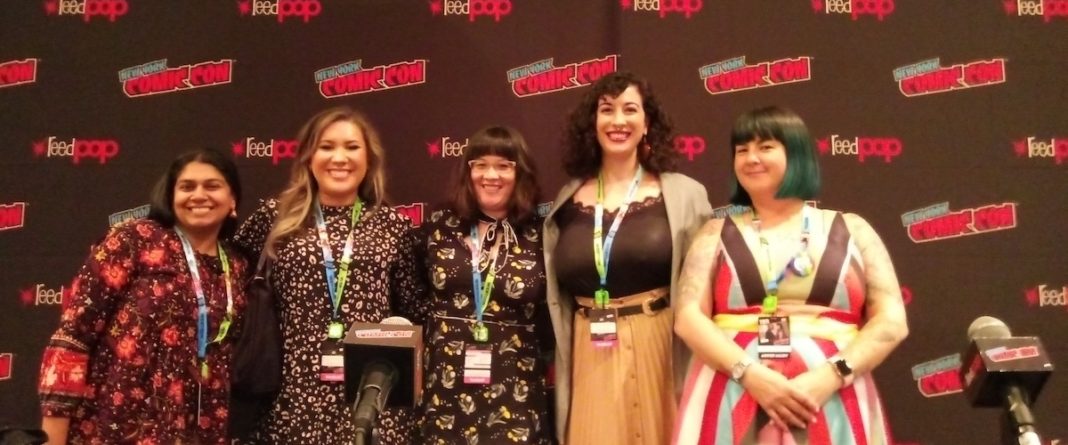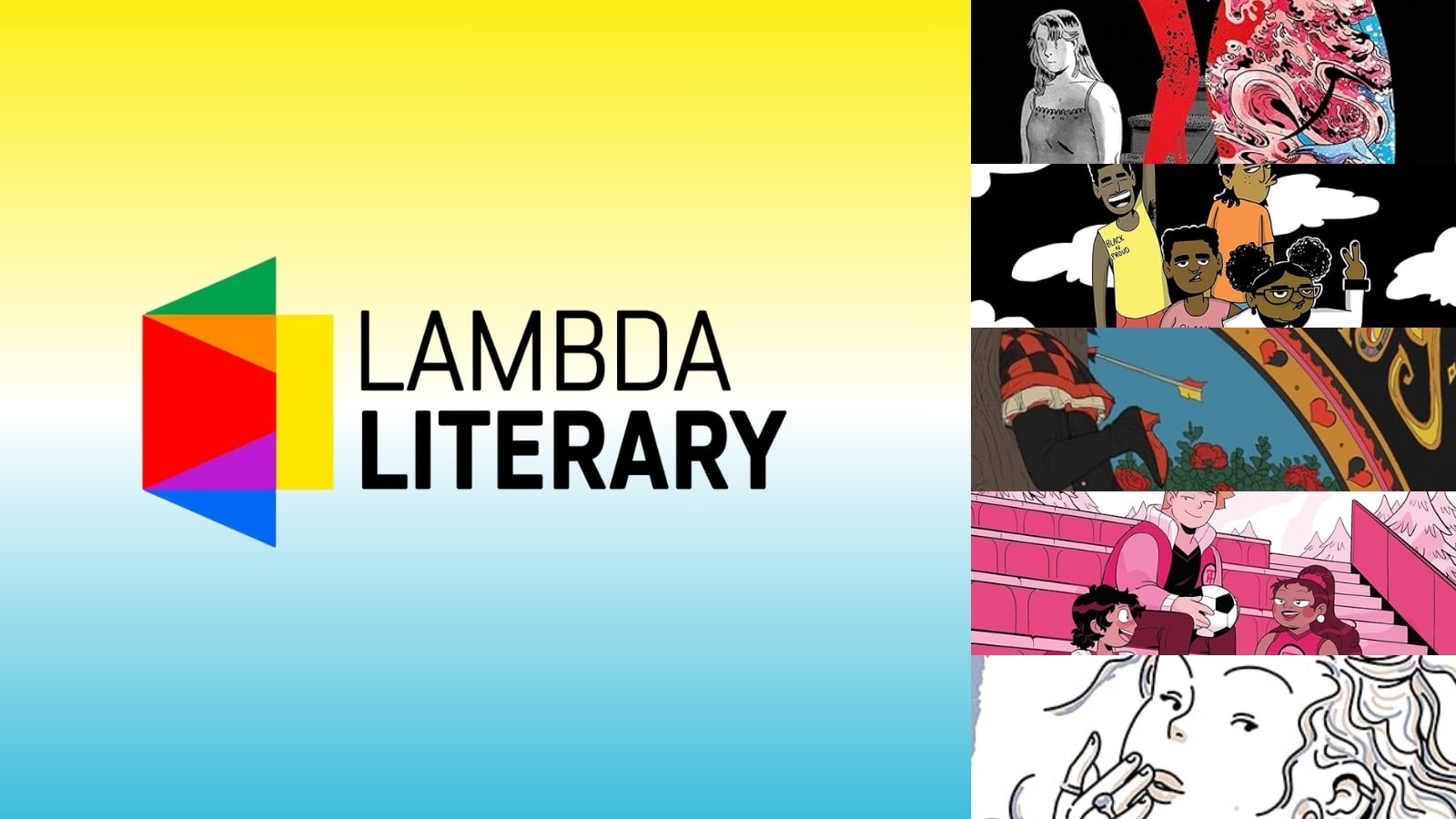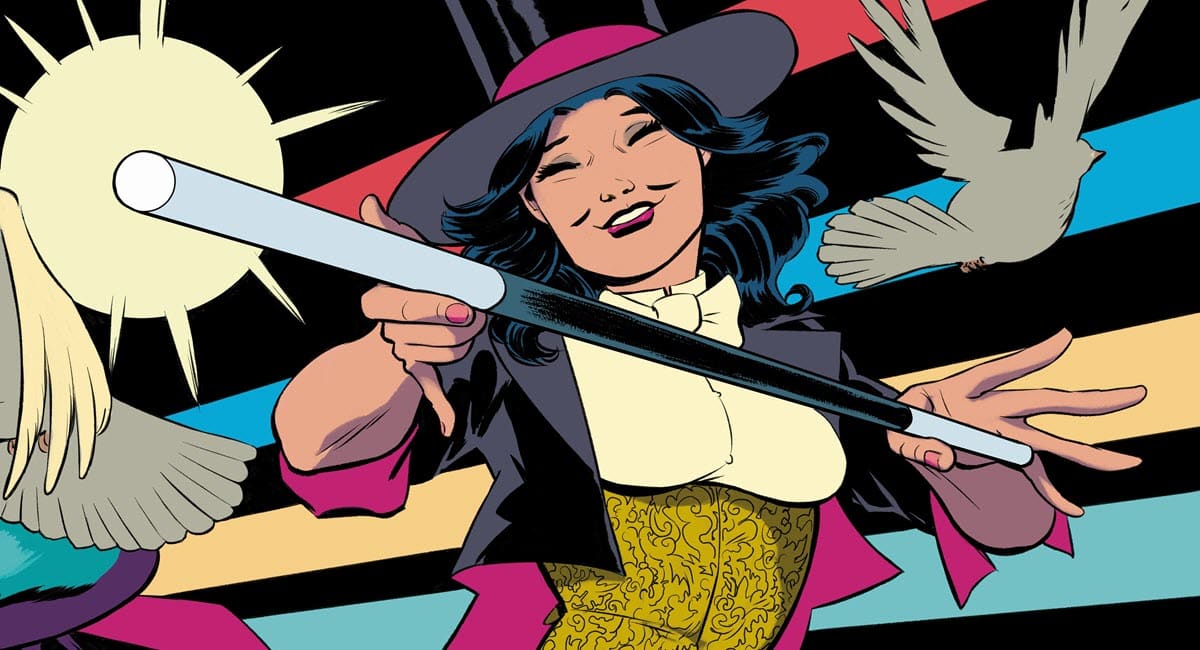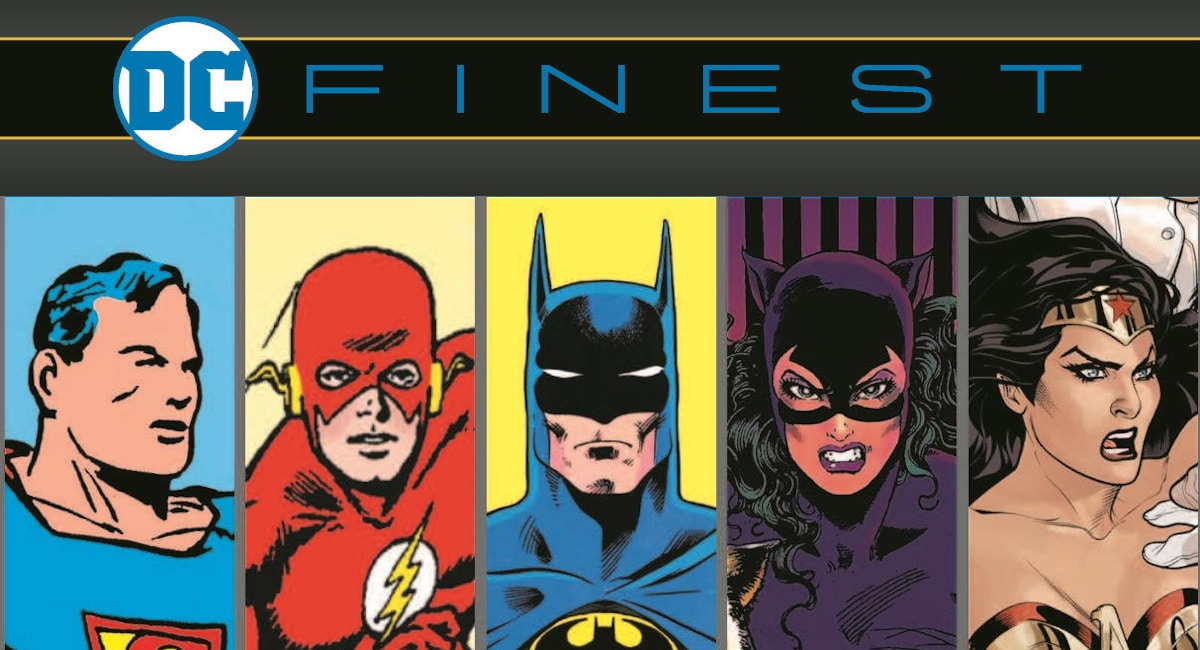By Sara L. Jewell
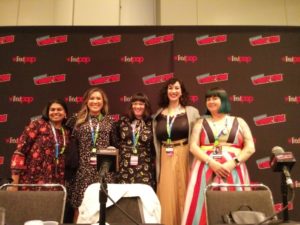
Saturday morning at NYCC dawned on a spirited conversation between creators of the “Is This a Kissing Book?!” panel’s titular books, moderated by writer, editor, and Teen Vogue columnist Lily Herman.
Co-creators of the multi-award-winning graphic novel Laura Dean Keeps Breaking Up With Me (about a fraught lesbian relationship between high schoolers), Rosemary Valero-O’Connell and Mariko Tamaki, joined fiction writers Sarah Kuhn (Heroine Complex — a series centered on Asian-American superheroines), Renee Ahdieh (The Beautiful — a vampire series set in 19th century New Orleans), and Sona Charaipotra (Symptoms of a Heartbreak — a YA romantic comedy about “the youngest doctor in America” a 16-year old Indian-American teenager) to talk about “The romantic relationships in [their] books [which] span the good, the bad, and the truly ugly aspects of affairs of the heart.”
After introductions, the panel of writers jumped right in with an introductory question from Herman about the challenges of writing romance that is simultaneously intriguing and realistic. Tamaki remarked on the advantages of a visual medium like comics that allows you to literally show and not always tell.
“In this book there are multiple realities,” she said, in terms of perspective, going on at once, but “the hardest thing writing a book about love was writing the advice columns” for Laura Dean’s fictional advice columnist.
Illustrator Valero-O’Connell described narratives about young people as having a “built-in intensity” where “the stakes are incredibly high.” Teenagers, she went on, don’t yet know that ultimately, things will be ok. She also brought up the unique properties of the graphic novel as a medium with “dual forms of storytelling,” especially the ability to play with time and draw out something like the “extended glance” that’s emblematic of romantic storytelling.
Kuhn described fighting her own impulse to undercut her character’s earnestness with a joke. “Characters have to feel uncomfortable to fall in love,” she said. In addition, instalove, or love at first sight, is a lot realer to teenagers than adults might think, even if the relationships ultimately do not work out.
Charaipotra added that it’s important that a romance has both “chemistry and conflict,” which segued into Herman’s next question on the often twisted and winding path that characters must travel in the genre: How do you balance reader’s desires and expectations for the characters with the necessity of creating and sustaining narrative conflict?
Ahdieh immediately jumped in by confessing that one of her own favorite genre conventions is “enemies to lovers,” which “happened with me and my husband, actually…we didn’t like each other when we first met… When there is antagonism, you don’t have a filter,” she explained, which allows characters to be more real and authentic with each other from the get go. Romeo and Juliet, for example, were as fated to hate each other as love each other with the enmity that existed between their families.
“Falling in love is easy, staying in a relationship is hard,” Tamaki said — you have to come to terms with the flaws in your initial projection of a romantic interest.
Valero-O’Connell ruminated on how Laura Dean is kind of an inversion of the will-they won’t-they conflict employed by numerous romances, in that you’re waiting for the protagonist to break up with her girlfriend instead of get together with her, when she finally acknowledges that the relationship is a toxic one.
Kuhn said that when dealing with tropes and conventions, she is “writing for myself as a reader in mind and hoping I’m not the only reader who is like me…I’m also delighted when readers tell me I got something wrong! I’m delighted that someone had a strong enough reaction to my work to feel that way.”
Writing the fiction that resonates with you personally as an author, despite your audience or perceived audience, was a common thread during the “Kissing Book” conversation. Kuhn also touched on the “show-don’t-tell” of visual storytelling in comics with an anecdote about her own comics writing for Clueless. An establishing shot of an attractive love interest cinched the scene visually so well, she almost felt they didn’t need to do any more than that to communicate what was needed.
The “Kissing Book” panel also focused on the desire for HEA (Happily Ever After) even while it can be boring without enough conflict. “If it’s too easy, you don’t want it,” Charaipotra laughed. She and Ahdieh commiserated over their interest in the complexity inherent in angst. Charaipotra said that some readers recoil when they find out that one of her book’s love interests has cancer, because it implies the possibility of tragedy and there not being a HEA. Kuhn said that if you stress about whether HEA will happen even if you’re reasonably sure — due to something like genre expectation — that it will, you know it’s well-written.
Panelists expressed frustration at several points in the panel over the enduring misconception that romance is an inherently frivolous genre, or that it’s easy to write. Ahdieh brought up the implicit misogyny in viewpoints like these. “How long are we going to hate on the things that women love?” she asked, referencing the denigration of bodice-rippers which are oft described as guilty pleasures or trash.
Romance is the most lucrative genre, Kuhn said, but it’s also “the hardest to write.” When later asked to give advice to someone who wants to write romance, Kuhn situated successful romantic fiction as the product of writers with “respect for the genre” who understand that it’s a “[mis]perception that romance is easy,” a view that she frequently sees coming from men. “People can tell when you have a disdain for it,” she cautioned.
The panelists talked technical approaches to plotting and sung the praises of good outlines. Charaipotra said she’s “a definite plotter…I need a road map.” Ahdieh brought up the challenge of giving characters what they want and those characters then dealing with whether they actually want it or not. Kuhn talked about the challenge of not having a genre plot to fall back on with her contemporary romance book I Love You So Mochi, which initially had an outline that was relatively sparse.
Tamaki, as a comics writer, acknowledged that an outline is integral to the pitching process, but that in writing for comics, “the best part is that I then hand the script over to [the illustrator] and it gets rewriting again…a lot of comics is leaving space for something to happen. All of the texting in the book is Rosemary [Valero-O’Connell] – I don’t know how teenagers text!”
“The thing about graphic novels,” Valero-O’Connell replied, “is that this book is 300 pages and it took me two years. Who you are changes over the course of making it.” So it can be especially important to have a plan.
The panelists largely differed on what scenes are most difficult to write. Charaipotra found it hard to write the scenes in which one of her characters deals with cancer and her protagonist who is in love when them cannot help.
Ahdieh said that generally, a difficult scene is the one “where you give the character what they think they want, then very coldly rip it away.”
Kuhn said that initially, she had trouble writing sex scenes.
Valero-O’Connell described the difficulty in in the visual storytelling for Laura Dean in “walking the tightrope” between making the character Laura Dean believably appealing to the protagonist, Freddy, who falls in love with her, while still showing the audience that she’s a toxic relationship for Freddy to be in.
When it came down to the final question of the “Kissing Book” panel, on advice for writers hoping to write a book with romance at its core, most of the panelists agreed that the best advice is to ignore advice, at least initially, and just write what feels important and vital to you personally.
“Don’t take advice,” Ahdieh implored, just “write the book you want to read.”
Valero-O’Connell echoed this sentiment, saying “be honest about what is drawing you to the story that you want to tell — if there’s something that you love, have faith that others will love it, too.”


